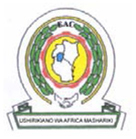
In order to promote public education and public safety, equal justice for all, a better informed citizenry, the rule of law, world trade and world peace, this legal document is hereby made available on a noncommercial basis, as it is the right of all humans to know and speak the laws that govern them.

EAS 232:2001
ICS 65.120
EAST AFRICAN COMMUNITY
© EAC 2001
First Edition 2001
iDevelopment of the East African Standards has been necessitated by the need for harmonizing requirements governing quality of products and services in East Africa. It is envisaged that through harmonized standardization, trade barriers which are encountered when goods and services are exchanged within the Community will be removed.
In order to achieve this objective, the Partner States in the Community through their National Bureaux of Standards, have established an East African Standards Committee.
The Committee is composed of representatives of the National Standards Bodies in Partner States, together with the representatives from the private sectors and consumer organizations. Draft East African Standards are circulated to stakeholders through the National Standards Bodies in the Partner States. The comments received are discussed and incorporated before finalization of standards, in accordance with the procedures of the Community.
East African Standards are subject to review, to keep pace with technological advances. Users of the East African Standards are therefore expected to ensure that they always have the latest versions of the standards they are implementing.
© East African Community 2001 — All rights reserved*
East African Community
P O Box 1096
Arusha
Tanzania
Tel: 255 27 2504253/8
Fax: 255-27-2504481/2504255
E-Mail: eac@eachq.org
Web: www.each.org
* © 2001 EAC — All rights of exploitation in any form and by any means reserved worldwide for EAC Partner States’ NSBs.
iiMaize gluten feed — Specification
This East African Standard prescribes the requirements for maize gluten feed used for livestock feeding.
Maize gluten feed shall be of two grades; namely, Grade 1 and Grade 2.
Grade 1 is commonly known as maize gluten meal.
Grade 2 is commonly known as maize gluten feed.
General — Maize gluten feed shall be in the form of a meal. The material shall be free from rancidity and from fermented, musty or other objectionable odour.
The material shall also be free from any extraneous matter, adulterants, harmful constituents, insects or fungus infestation.
Alflatoxin contamination shall not exceed 10 ppb.
The material shall also conform to the requirements prescribed in Table 1.
| Characteristics | Requirements | Method of test | ||
|---|---|---|---|---|
| Grade 1 | Grade 2 | |||
| 1 | Moisture, per cent by mass, max. | 12 | 12 | EAS 74-1* |
| 2 | Crude fat, per cent by mass, min. | 4 | 3 | EAS 74-1* |
| 3 | Crude protein (N × 6.25), per cent by mass, min. | 45 | 23 | EAS 74-1* |
| 4 | Crude fibre, per cent by mass, max. | 3 | 8 | EAS 74-1* |
| 5 | Acid insoluble ash, per cent by mass, max. | 0.5 | 0.5 | EAS 74-1* |
|
*Method of test for animal feedstuffs. NOTE Requirements for characteristic (2) to (4) are on moisture free basis |
||||
The material shall be packed in clean, sound bags, capable of protecting the product from spilling and damage during transfer.
Each bag shall be marked according to EAS 38, Labelling of prepackaged foods. The label shall include the following information, legibly and indelibly marked on the outside:
Tests shall be carried out as described in the relevant clauses of EAS 74-1, Method of test for animal feedstuffs.
Tests for crude protein and crude fat shall be conducted individually on each of the samples constituting a set of test samples while the tests for the remaining characteristics specified in Table 1 shall be conducted on the composite sample.
2